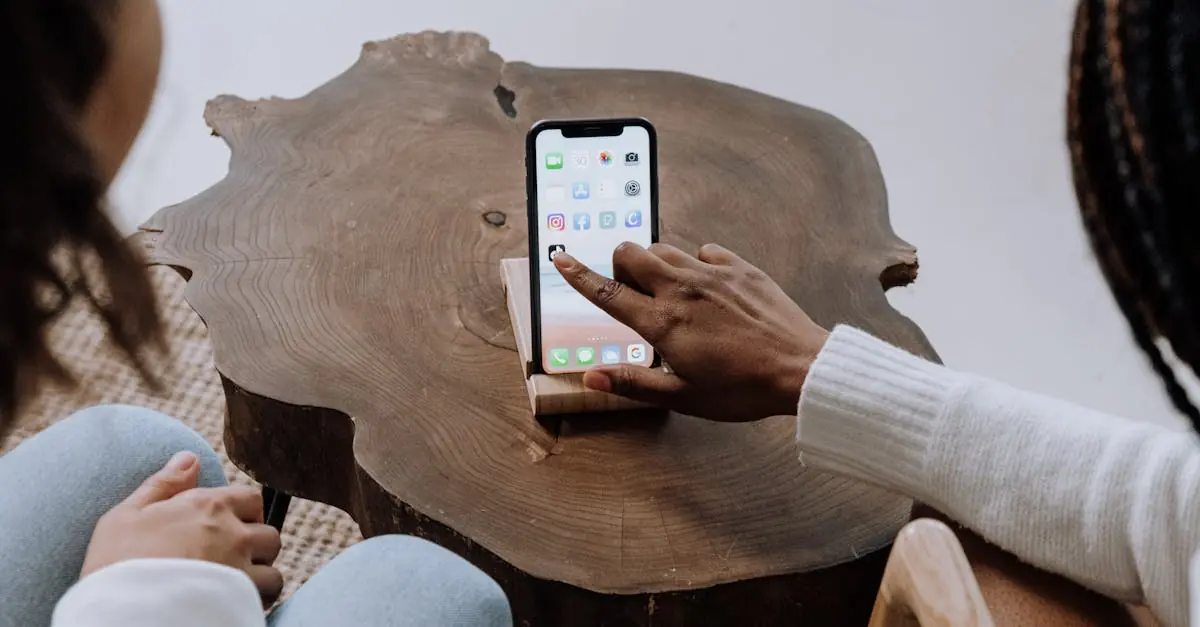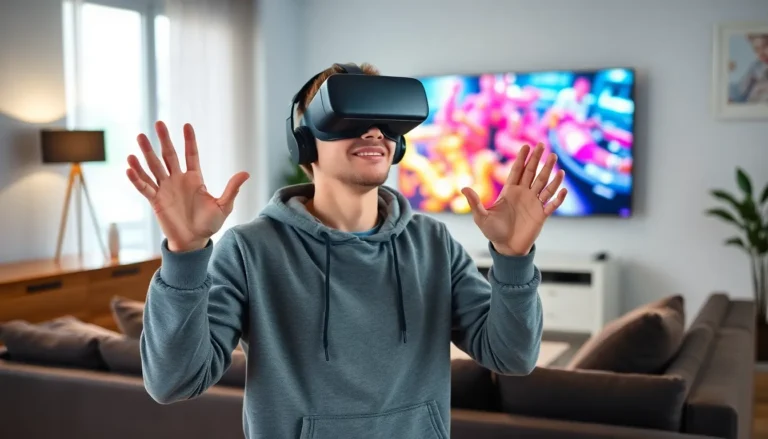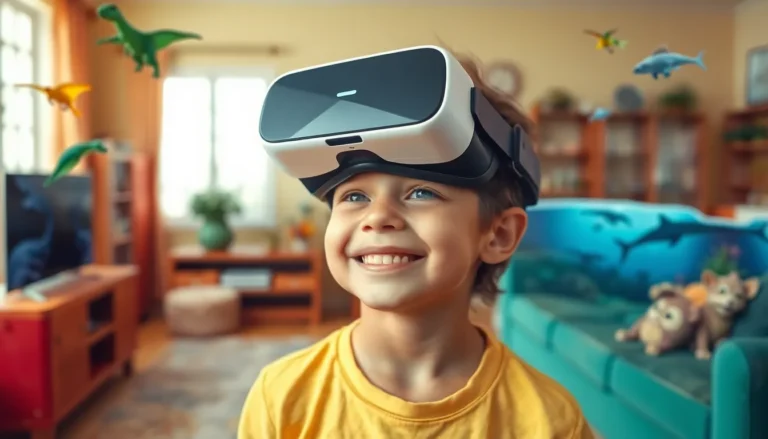AirTags have taken the world by storm, promising to help users keep track of their belongings with ease. But here’s the million-dollar question: do you really need an iPhone to make these little tracking wonders work? Imagine losing your keys again, only to find out your trusty AirTag is as useful as a chocolate teapot without an Apple device.
Fear not, Android users! While AirTags are designed with iPhones in mind, they’ve got a few tricks up their sleeves for non-Apple aficionados too. With a sprinkle of creativity and the right apps, anyone can join the AirTag party. So let’s dive into the ins and outs of using AirTags without an iPhone and see if you can still keep your stuff safe and sound.
Table of Contents
ToggleOverview of AirTags
AirTags are small Bluetooth-enabled tracking devices created by Apple. These devices attach to personal items like keys, bags, or backpacks. Users locate their belongings through the Find My app, which leverages Apple’s extensive network. Each AirTag utilizes a built-in speaker, enabling it to emit sounds for easier identification.
The precision of AirTags relies on the U1 chip, which enables Ultra Wideband technology. This technology allows users to track items more accurately compared to traditional Bluetooth tracking. With visual guidance provided on compatible devices, individuals can follow precise directions to their lost items.
Apple designed AirTags primarily for iPhone users, optimizing the experience for this group. However, Android users don’t miss out entirely. They can use NFC to interact with AirTags, allowing them to access contact information when the device is tapped with an NFC-capable phone.
Despite Android users facing limitations, they can employ alternative applications for tracking. Some third-party apps on Android integrate with AirTags for basic functionalities. While the experience differs, non-Apple users maintain the ability to utilize AirTags creatively.
AirTags primarily serve iPhone users but remain functional for those with Android devices. Their tracking capabilities revolutionize how individuals keep track of belongings, enhancing security for various items. With innovative technology and user-friendly features, AirTags stand out in the tracking device market.
Compatibility with iPhones
AirTags primarily function within Apple’s ecosystem, making iPhones the ideal devices for optimal usage. Users benefit from seamless integration with the Find My app, allowing them to track AirTags effortlessly.
iPhone Features for AirTag Usage
iPhones offer exclusive features that enhance AirTag functionality. The Find My app displays real-time locations, making it easy to locate missing items. With the U1 chip, iPhones enable precision tracking, providing users with more accurate directions to their AirTags. Additionally, alerts notify users when they are separated from an AirTag, preventing the loss of belongings. Users can play sounds on their AirTags directly from the app, simplifying the search process.
Limitations for Non-iPhone Users
Non-iPhone users encounter several limitations when using AirTags. Access to the full features of the Find My app is unavailable, limiting their tracking capabilities. NFC allows non-iPhone users to view contact information, but it does not enable them to track items in real time. Without the U1 chip, precise directions for locating AirTags are also inaccessible. Third-party apps may provide some basic features, yet they cannot replicate the full integration found within the Apple ecosystem.
Using AirTags with Non-Apple Devices
AirTags primarily target iPhone users but offer some functionality for Android devices. Non-Apple users can still make use of these tracking tools, albeit with limitations.
Android Device Compatibility
Android users can detect AirTags but face restrictions. Non-Apple devices utilize NFC to access limited features, such as viewing associated contact information. However, real-time tracking does not occur. Without the Find My app, locating AirTags becomes challenging. They won’t benefit from the advanced features exclusive to iPhone, such as precision finding powered by the U1 chip. Despite these drawbacks, AirTags can still serve as useful tracking devices when attached to personal items.
Third-Party Applications
Various third-party applications may enhance the AirTag experience for Android users. Some apps can display nearby AirTags and offer basic locating capabilities. While these applications facilitate some tracking, they do not provide the comprehensive integration found in Apple’s ecosystem. Users often rely on these solutions for simple identification of lost items. Most noteworthy is the absence of features like alerts for separation and sound playing. Despite limitations, Android users have options available to improve their experience with AirTags.
Pros and Cons of AirTag Usage
AirTags provide numerous benefits, particularly for iPhone users. Integrated into Apple’s ecosystem, these small devices allow seamless tracking of belongings. Users can experience real-time location tracking, enhancing the chances of finding lost items. The precision of the U1 chip offers unparalleled accuracy compared to standard Bluetooth trackers. Alerts notify users when they move out of range of their AirTags, adding an extra layer of security.
Cost-effectiveness is another advantage. An AirTag typically retails for $29 each, making them an affordable option for tracking essential items. The ease of attaching AirTags to various personal belongings like keys and bags simplifies the tracking process. Their lightweight and compact design ensure that they won’t add bulk to items.
Despite the multitude of advantages, certain drawbacks exist. Non-iPhone users cannot enjoy full access to the Find My app’s features, limiting their tracking abilities. Real-time tracking and separation alerts remain exclusive to iPhones, which present a challenge for Android users. Detection through NFC provides minimal functionality, mostly restricted to viewing contact information only.
Limited integration defines the experience for Android users. Although some third-party apps claim to enhance tracking capabilities, they often fall short of replicating the full functional benefits available to iPhone users. This lack of comprehensive features may discourage Android users from relying on AirTags as their primary tracking solution.
While AirTags excel in functionality for iPhone users, non-iPhone users face various limitations that restrict their overall experience. Users must weigh the benefits and potential drawbacks when considering whether to utilize AirTags for their tracking needs.
AirTags offer a unique tracking solution primarily designed for iPhone users. While Android users can access some basic features through NFC and third-party apps, they won’t experience the full potential of AirTags. The seamless integration within Apple’s ecosystem allows iPhone users to benefit from real-time tracking and advanced features that enhance the overall experience.
For those considering AirTags, it’s essential to evaluate their device compatibility and the limitations that come with non-iPhone usage. Ultimately, AirTags can still provide value as tracking devices, but users should be aware of the constraints they may encounter without an iPhone.




